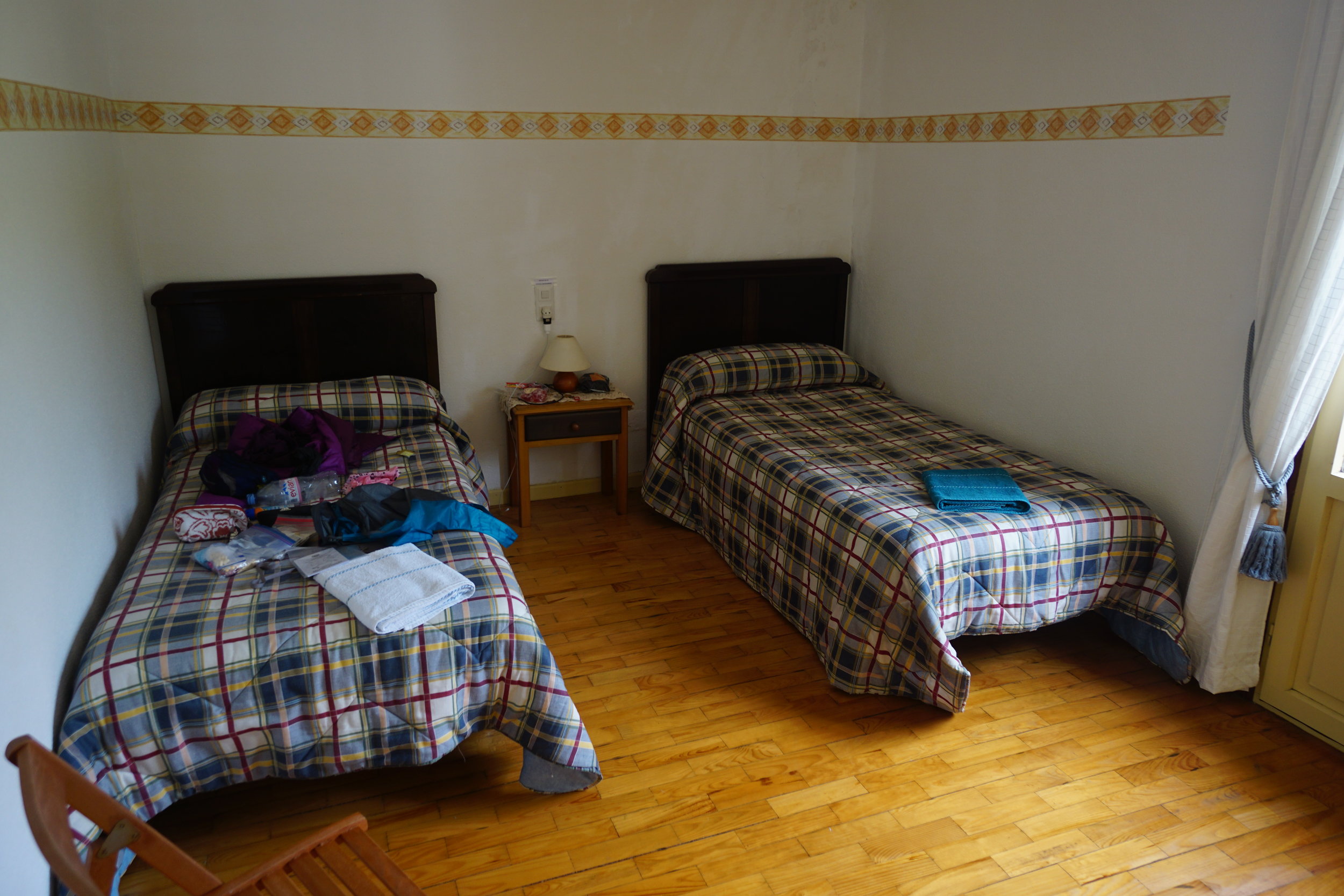Strategies for Walking the Camino
As you research the available info on hiking the Camino, be aware that a lot of advice is hogwash. In the end you have to decide for yourself what to take, how to navigate, where to sleep, where to eat, etc. Here are some admonitions that I found to be baloney, with an explanation of my experience.
Planning an itinerary for the whole trip. Your itinerary planning is a waste of time. Your real decisions are where to start, how much time you have to walk, and how far you can go in a day. If you plan on hiking 30 km per day, but you can only hike 20 km, the 20 km for the day is the reality. As to where to start, you can start at the most popular place, St.Jean Pier de Port in France, or in Roncessvalle Spain, or bigger towns such as Pamplona, Burgos, Lagrono, Leon, Ponferrada, or in Sarria which is 100 km from Santiago and thus qualifies you for a compostella, an official certificate of completion.
On how you are going to hike, some options are:
1. The ideal: Walk every mile start to finish, carry your pack every step, and shoot for x km per day, in order to finish the whole trail in x days. The Brierly guide book lays out a 35 day itinerary to do just that, and implies that it is doable. It is doable, as long as you don't get blisters, as long as you can hike 30 km from day one through to the end, and as long as any hiking partners you have don't get blisters or sick. The percentage of pilgrims who hike by this "ideal" plan is tiny to non-existent. More often people start in Sarria, Leon, or Burgos, Some walk for one week each year, and take several years to finish the whole Camino. Or they take a bus once in a while, or hire a van to transport their pack to the next town. The fallacy is that there is any stigma to that.
2. The reasonable way: Hike as many km as your body can comfortably take, which for me started at about 15 km per day, and was as much as 25 km toward the end, 6 weeks later. If you get blisters your km count will be super low and painful, so take precautions to not get blisters. I didn't get one blister in 6 weeks.
3. The fun way: Hike as far as is comfortable each day, sending your pack ahead by courrier some days and only carrying a small pack, take extra days in interesting towns, take a bus once in a while to skip boring sections, Have rest days (or weeks) for healing the feet, sightseeing, or seeing the sights of an interesting city.
4. Think outside the box: Rent a bike once in a while, and ride to the next town,and turn in the bike at the next town. Some sections of the Camino are very amenable to this option. We didn't try this but met others who did.
On where you sleep, your choices are:
1. The ideal: Stay in albergues each night, at a cost of 6-12 EU. Plan on activity all night, meeting a variety of people including fun people and obnoxious loud people. People will be coming in at midnight, and getting up at 4 am to leave. If there is food it is generally crap, there is often no blanket, and bathroom or shower room can be primitive or nice, depending. Don't book a room ahead but just see what is available when you get there. This might cause you to have to walk another 10 km when you are dead tired to find a bed, or to put in a day of 50 km (31 miles). I saw both of these examples. The bunk bed situation below is very clean and tidy, and was 12 EU.
2. The Delux plan: For 25-65 EU per night, stay in hotels, pensiones, or Casas Rural for a variety of luxury and levels of comfort. Some have a shared bathroom for a floor in a house, some have private baths. I only experienced comfortable beds with blankets provided, nicely remodeled showers and bathrooms. We figured how far we thought we could walk the next day, saw what towns were at that distance, and looked on bookings.com for available rooms and prices. We reserved a room we liked, and paid for it either when we got there or on the app,, using a credit card. It was nice knowing we had a place to sleep at the end of the day, and that our day would end at a distance we could handle. The room below with the plaid bedspread was 40 EU, The one below that was 65 EU and had a private bath. The hosts all used bookings.com and we had no snags with our reservations.
3. A low cost interesting plan: Mix it up, with a mix of albergues and hotels.



